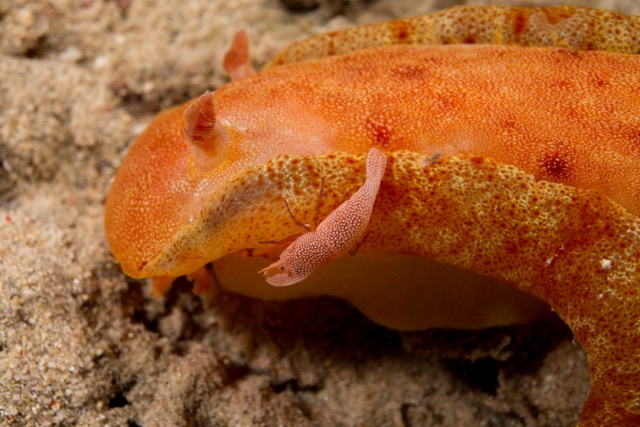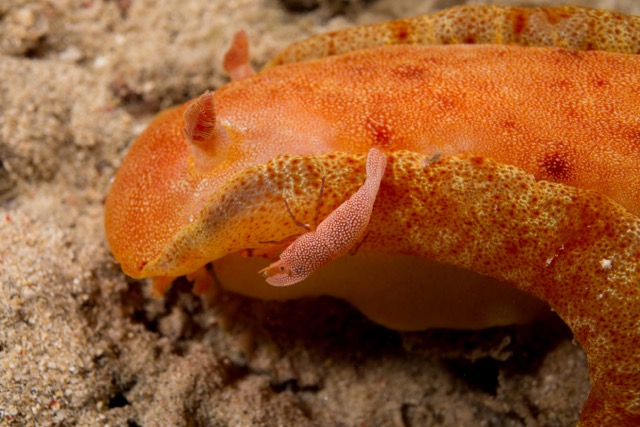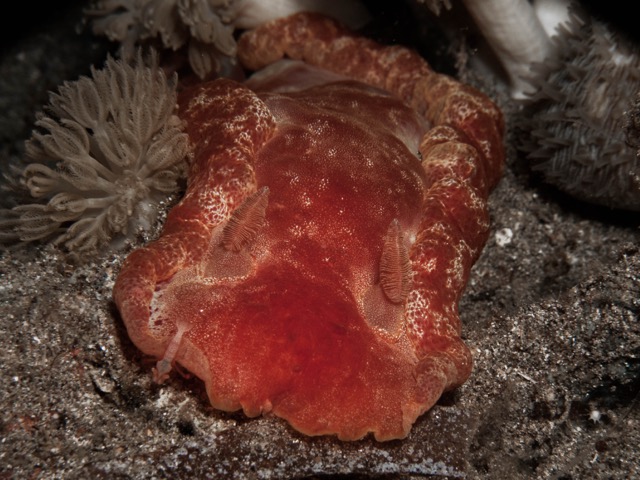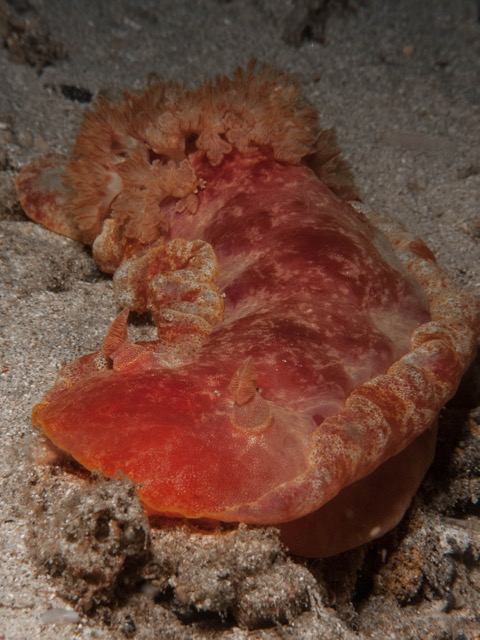Queen of the Slugs – The Spanish Dancer
|March 7, 2024


Life in the Underwater Realm: A Mirror of the Surface
Life in the underwater realm is in many ways similar to life above the ocean. There is the food chain that begins with creatures getting their energy from the sun, and then those that eat them to get their energy, and then even bigger animals at eat them. In a constant battle for survival, creatures must come up with different ways to defend themselves from predators, and produce offspring for the survival of the species. Different creatures breed at different times of the month or year, so some times we may go for a long time without seeing a specific creature, and other times they seem to be around every corner!

Majestic Spanish Dancers: Nighttime Wonders
Recently, we have been seeing numerous Spanish Dancers – Hexabranchussanguineus (The Latin name literally translates as ‘blood coloured six gills’)whilst night diving on some of North Sulawesi’s sandy slopes. With fully grown adults reaching at least 40cm, the Spanish Dancer is the largest species of Nudibrach, and one the world’s largest known species of slug.

Bright and Toxic: Defense Mechanisms of Spanish Dancers
Like many other species of Nudibranch, the Spanish Dancer is extremely brightly coloured and does not blend in with its surroundings. This is a defence mechanism that warns potential predators of its toxic flesh, a similar mechanism used by many terrestrial animals such as poison dart frogs. Spanish Dancers are specialised predators that feed on some toxic species of sponge, and concentrate those toxins to provide not only their own defence, but defence for their eggs. The egg spirals are large (relative to the size of the creature that laid them), and again brightly coloured pink or red as a warning to their toxicity. The eggs are relatively safe from being eaten by other animals, but occasionally you may find other species of nudibranch eating the egg spirals.
Nocturnal Habits: The Dancing Nudibranchs at Night
Being nocturnal, during daylight hours Spanish Dancers are usually hiding away from the sunlight in cracks and crevices of the reef. Once it gets dark, they make their way onto the reef and begin feasting on sponges, or trying to find a mate. They spend most of their time crawling along the substrate (reef, sand or rubble) however if a threat does appear, they can swim to safety by violently flapping their external gills. This behaviour looks somewhat similar to flamenco dancers, hence their common name ‘Spanish Dancer’.
Hidden Gems: Emperor Shrimp and Spanish Dancers
Due to their large size, they might not be the best macro photography subjects, however by looking a little closer you may be well rewarded… Like many other large species of Nudibranch, Spanish Dancers are often home to the incredible commensal Emperor Shrimp Periclimenes imperator, and with a little patience, the shrimp may manoeuvre itself into an interesting position for a great behaviour shot.
Unveiling Nature’s Secrets: A Month of Spanish Dancer Sightings
For nearly one month we have had these regular Spanish Dancer sightings all over Bunaken Marine Park, usually with 1 or 2 per night dive. We don’t know how long this will last for, but when their numbers decline they will be replaced by something else equally interesting, be it frogfish, ghost pipefish, or octopus.
The post Queen of the Slugs – The Spanish Dancer appeared first on Siladen Resort & Spa Indonesia.